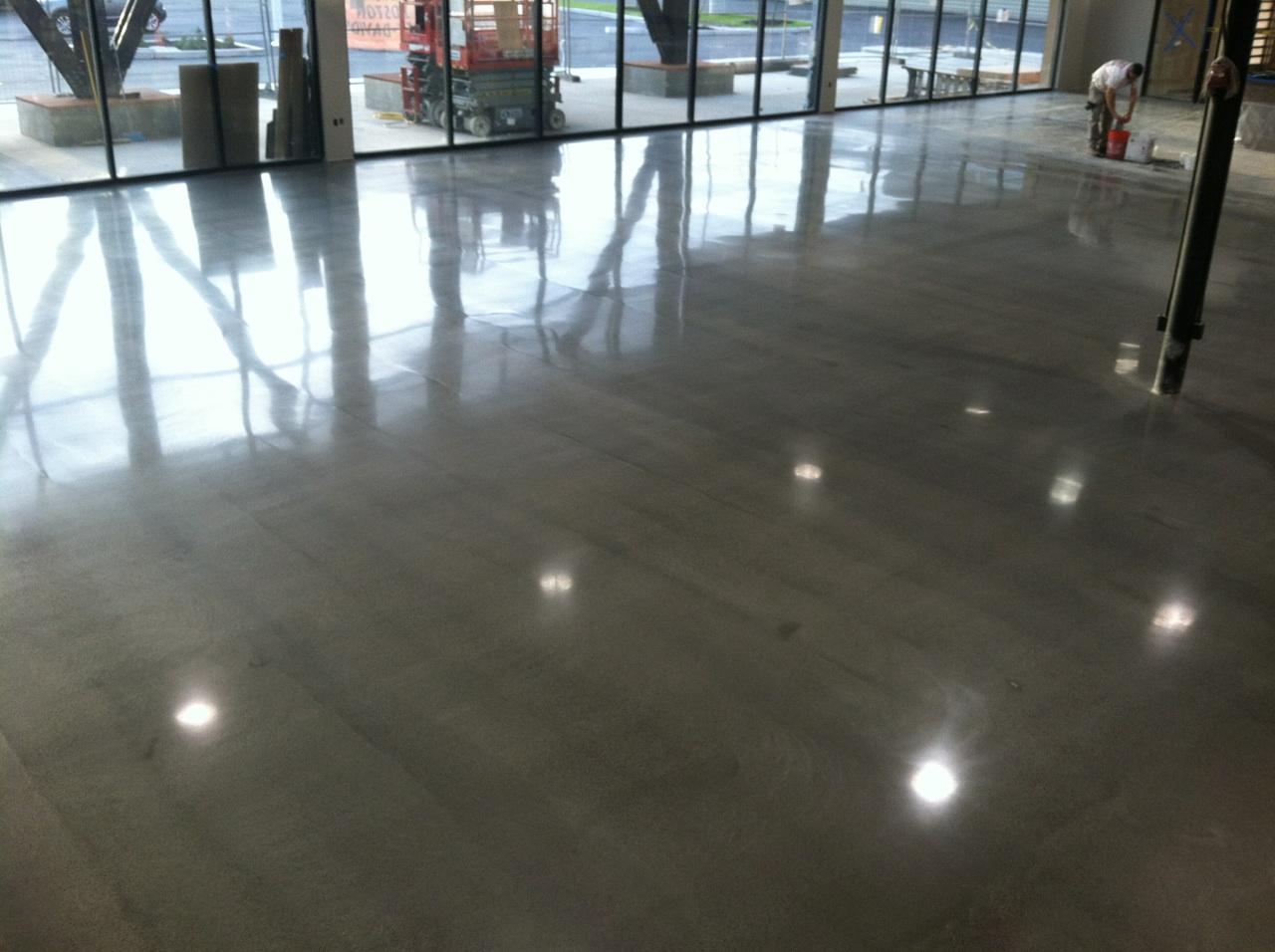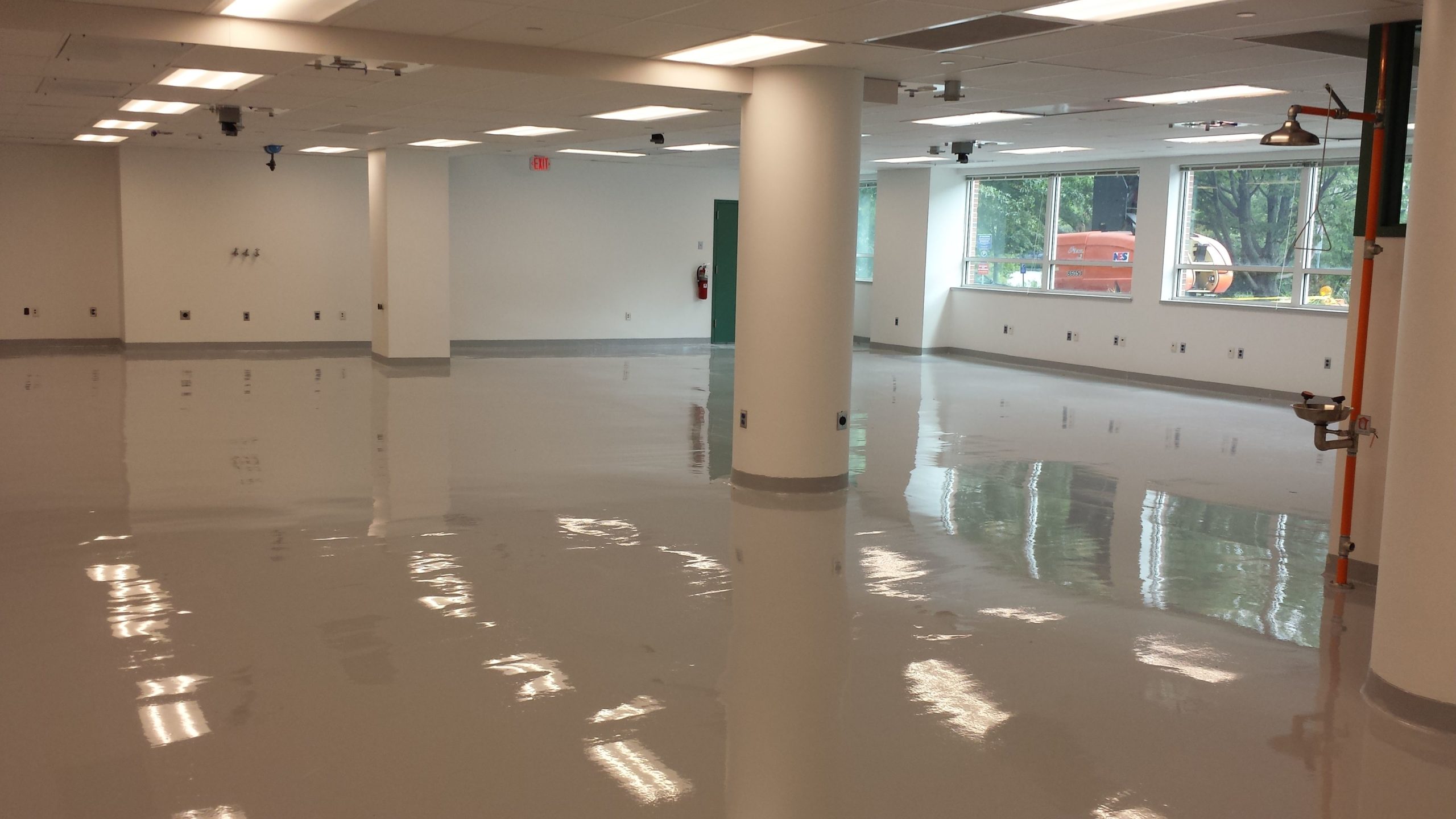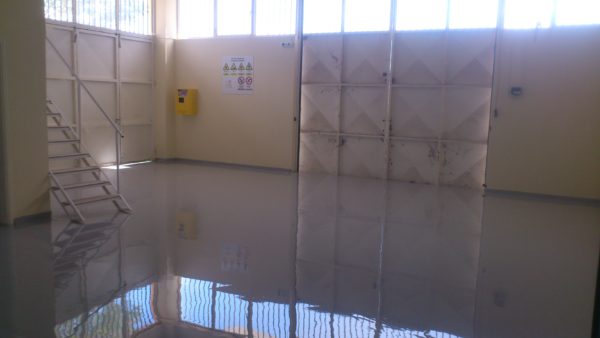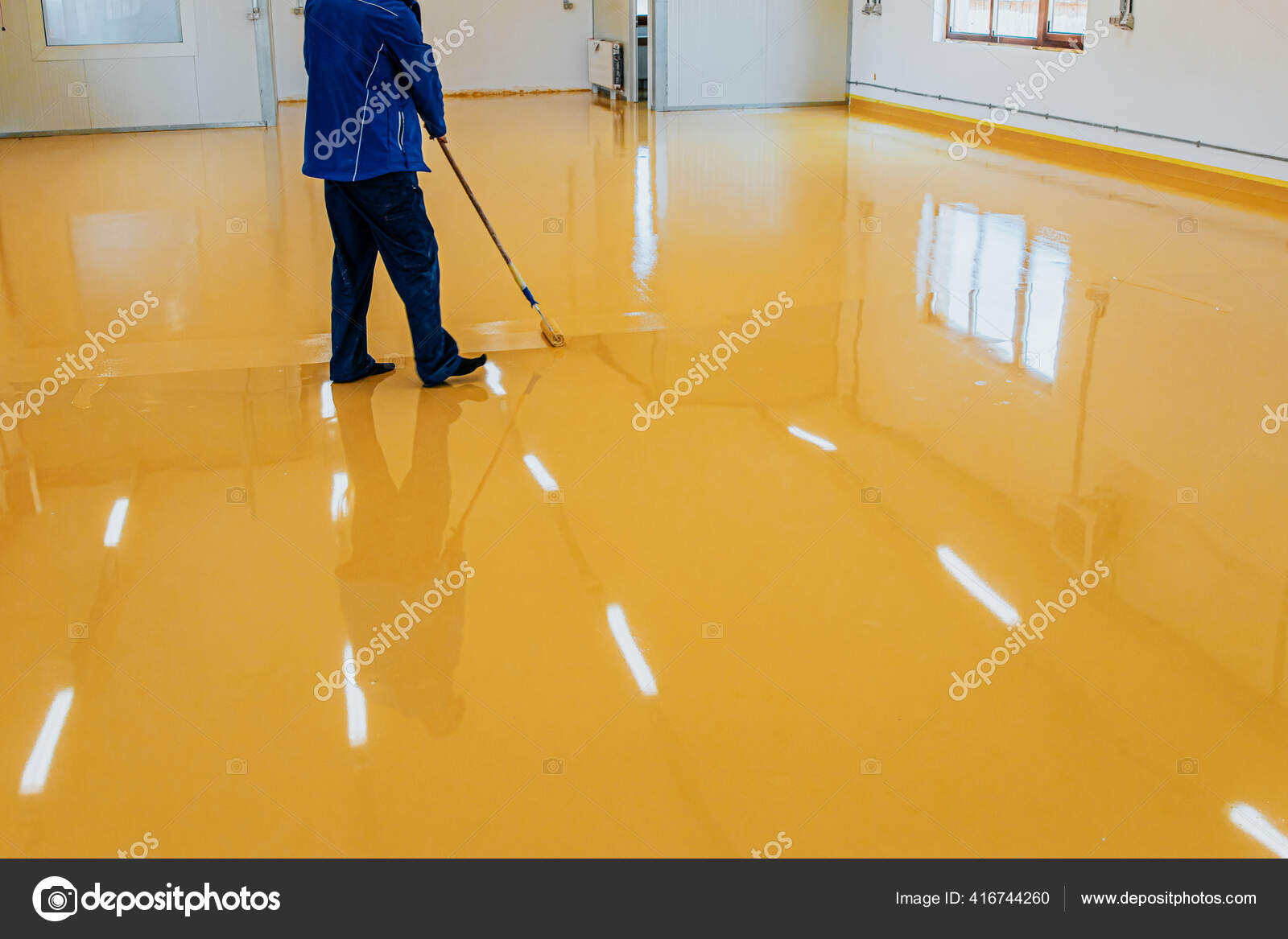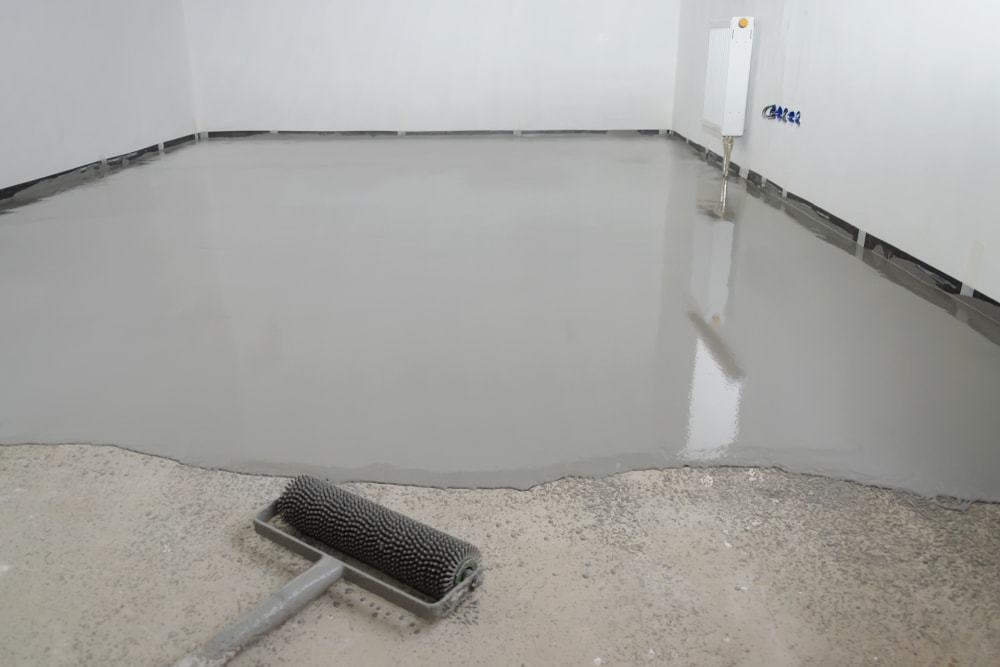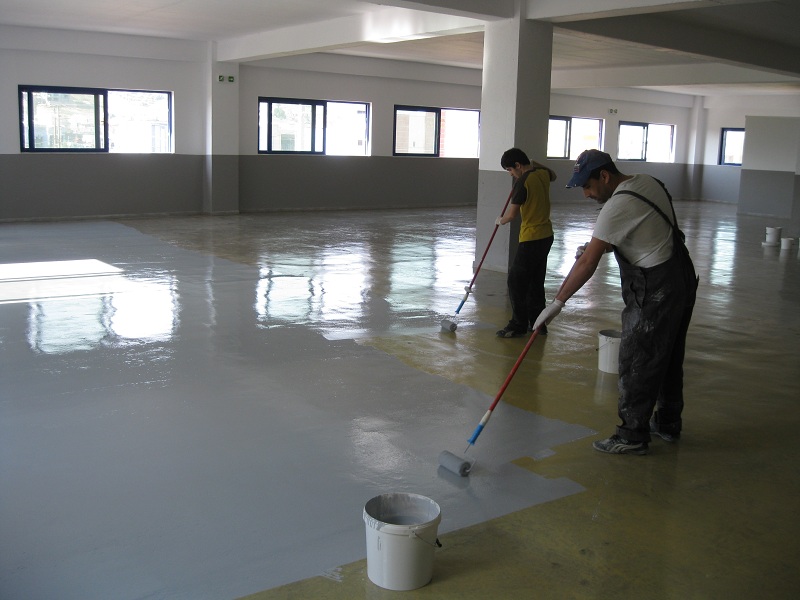Understanding Epoxy Floor Coating Self-Leveling
Epoxy floor coating self-leveling is a specialized type of flooring system that offers a smooth and seamless surface with minimal effort. Unlike traditional epoxy coatings that require manual spreading and leveling, self-leveling epoxy is designed to flow evenly across the floor, creating a flat and uniform finish. Let’s discuss what epoxy floor coating self-leveling is and how it works.
- Composition: Epoxy floor coating self-leveling is typically composed of epoxy resin, hardener, and fillers. The unique formulation allows the material to flow and level itself out when applied to the floor, eliminating the need for manual spreading or smoothing. This self-leveling property ensures a smooth and even surface, making it ideal for areas where aesthetics and durability are paramount.
- Application Process: The application process of epoxy floor coating self-leveling involves several steps. First, the floor surface must be thoroughly cleaned and prepared to ensure proper adhesion. Any cracks, holes, or imperfections should be repaired and filled before applying the self-leveling epoxy. Once the surface is prepped, the epoxy mixture is poured onto the floor and spread evenly using a squeegee or roller. The material then levels itself out to create a seamless finish, which is left to cure and harden according to the manufacturer’s instructions.
- Uses: Epoxy floor coating self-leveling is commonly used in commercial and industrial settings where a durable, low-maintenance flooring solution is required. It is often found in warehouses, manufacturing facilities, retail spaces, and automotive garages. However, its aesthetic appeal and ease of maintenance also make it a popular choice for residential applications such as basements, kitchens, and living areas.
- Advantages: One of the main advantages of epoxy floor coating self-leveling is its ability to create a smooth and seamless surface with minimal effort. The self-leveling properties of the material eliminate the need for manual spreading and smoothing, saving time and labor during installation. Additionally, the seamless finish is highly resistant to stains, chemicals, and abrasions, making it easy to clean and maintain over time. Epoxy floor coating self-leveling also offers excellent durability and longevity, providing a long-lasting flooring solution for both commercial and residential applications.
- Limitations: While epoxy floor coating self-leveling offers numerous benefits, it is important to note some limitations. The material is not suitable for uneven or heavily damaged surfaces, as it may not be able to level out properly. Additionally, self-leveling epoxy is not recommended for outdoor use or areas exposed to direct sunlight, as it may yellow or degrade over time. It is essential to follow the manufacturer’s guidelines and recommendations for proper application and maintenance to ensure optimal performance and longevity of the flooring system.
- Cost Considerations: The cost of epoxy floor coating self-leveling varies depending on factors such as the size of the area, the condition of the existing floor, and any additional customization or decorative options. While self-leveling epoxy may have a higher upfront cost compared to traditional flooring materials, its durability and longevity often result in long-term cost savings through reduced maintenance and replacement expenses.
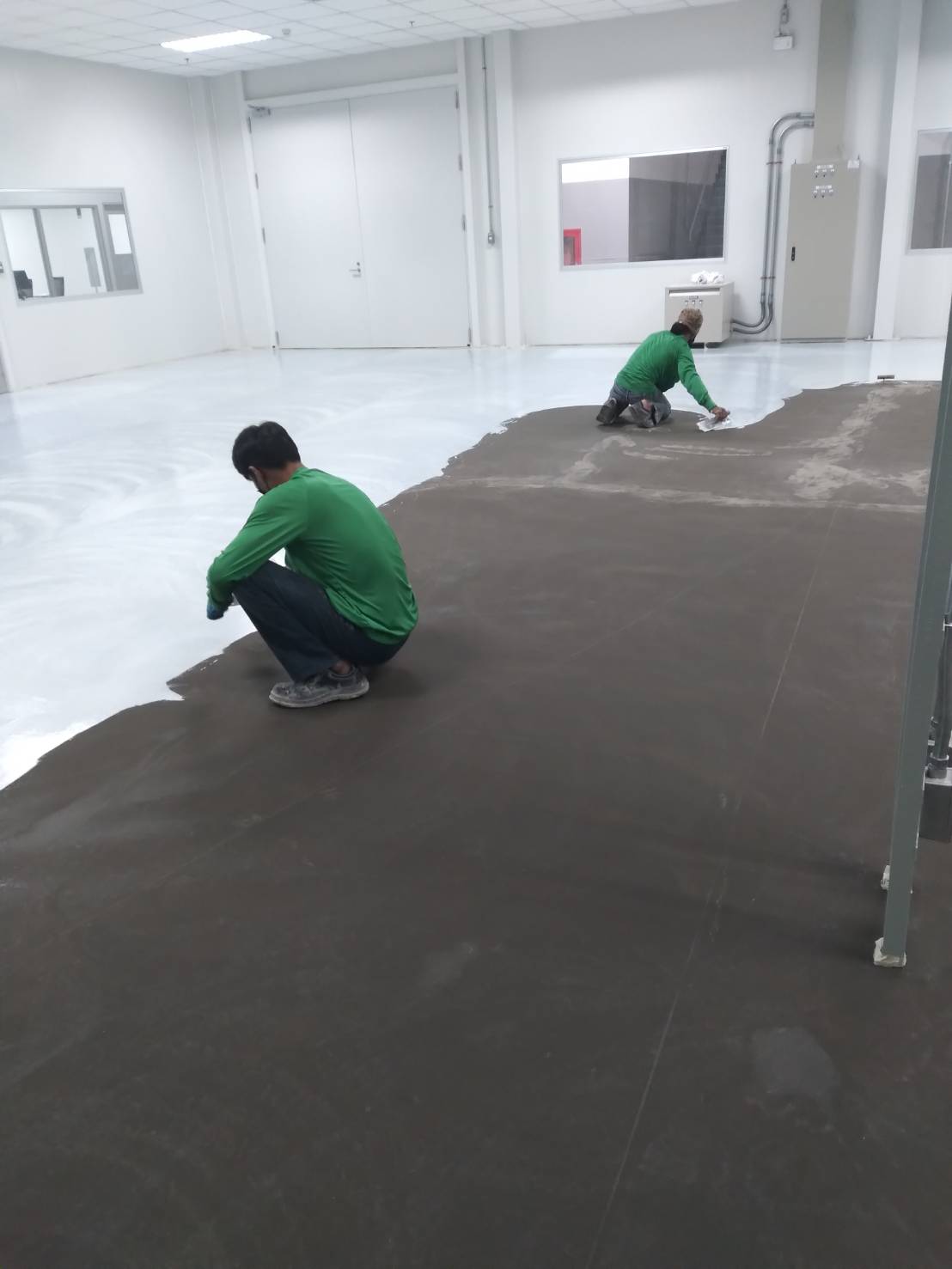
Benefits of Epoxy Floor Coating Self-Leveling
Epoxy floor coating self-leveling offers a wide range of benefits that make it a popular choice for commercial, industrial, and residential applications. From its seamless and durable finish to its ease of maintenance and versatility, self-leveling epoxy provides numerous advantages for flooring projects. Below are the benefits of epoxy floor coating self-leveling in more detail.
Seamless Finish: One of the primary benefits of epoxy floor coating self-leveling is its ability to create a seamless and uniform surface. Unlike traditional flooring materials such as tile or hardwood, self-leveling epoxy eliminates grout lines, seams, and joints, providing a smooth and uninterrupted surface. This seamless finish not only enhances the aesthetics of the space but also improves hygiene by reducing the accumulation of dirt, dust, and debris.
Durability: Epoxy floor coating self-leveling is highly durable and resistant to wear and tear. The epoxy resin forms a tough, protective layer over the underlying substrate, offering excellent resistance to stains, chemicals, abrasions, and impacts. This durability makes self-leveling epoxy ideal for high-traffic areas such as warehouses, manufacturing facilities, retail spaces, and automotive garages where heavy equipment and machinery are present.
Easy Maintenance: Maintaining epoxy floor coating self-leveling is quick and easy, requiring minimal effort and resources. The smooth and non-porous surface of the epoxy prevents dirt, oil, and other contaminants from penetrating the substrate, making it easy to clean with regular sweeping and mopping. Unlike traditional flooring materials that require specialized cleaning products and techniques, self-leveling epoxy can be cleaned using mild detergent and water, saving time and money on maintenance.
Versatility: Epoxy floor coating self-leveling is available in a wide range of colors, patterns, and finishes, allowing for endless customization options to suit various design preferences and aesthetic requirements. From solid colors to metallic effects and decorative flakes, self-leveling epoxy offers versatility in design, making it suitable for a variety of applications in both commercial and residential settings. Additionally, self-leveling epoxy can be applied over existing flooring substrates such as concrete, tile, or wood, providing a cost-effective solution for renovating and updating outdated floors.
Fast Installation: Compared to traditional flooring materials that require lengthy installation processes, epoxy floor coating self-leveling offers a fast and efficient installation process. The self-leveling properties of the material allow for quick and easy application, reducing downtime and disruption to the workflow. This is particularly beneficial for commercial and industrial projects where minimizing downtime is crucial to maintaining productivity and efficiency.
Environmentally Friendly: Many epoxy floor coating self-leveling systems are formulated with low volatile organic compound (VOC) content, making them environmentally friendly and safe for indoor use. Low VOC epoxy formulations reduce emissions of harmful chemicals into the air, promoting better indoor air quality and creating a healthier environment for occupants.
How to Apply Epoxy Floor Coating Self-Leveling
The application process of epoxy floor coating self-leveling requires careful preparation and attention to detail to ensure a smooth and seamless finish. From surface preparation to mixing and application, each step plays a crucial role in achieving optimal results. Below is the application process of epoxy floor coating self-leveling in more detail.
Surface Preparation: Proper surface preparation is essential for ensuring proper adhesion and performance of epoxy floor coating self-leveling. Begin by thoroughly cleaning the floor surface to remove dirt, dust, grease, and other contaminants. Repair any cracks, holes, or imperfections in the substrate using a suitable patching compound or filler. Once the surface is clean and dry, lightly abrade it using a floor grinder or shot blaster to create a rough texture that promotes adhesion.
Priming: Before applying the self-leveling epoxy, it is important to apply a primer to the prepared substrate to enhance adhesion and prevent moisture migration. Choose a primer that is compatible with both the substrate and the self-leveling epoxy system. Apply the primer according to the manufacturer’s instructions, ensuring complete coverage and uniformity across the entire surface.
Mixing: Mix the self-leveling epoxy resin and hardener according to the manufacturer’s instructions. Use a clean mixing container and a paddle mixer to thoroughly blend the resin and hardener until the mixture is uniform and free of any lumps or streaks. Avoid overmixing, as this can introduce air bubbles into the epoxy, affecting its self-leveling properties. Once mixed, allow the epoxy to sit for a few minutes to allow any air bubbles to rise to the surface and dissipate.
Application: Begin applying the mixed epoxy to the floor surface immediately after mixing to take advantage of its self-leveling properties. Pour the epoxy onto the floor in a continuous stream, starting from one corner of the room and working your way toward the opposite corner. Use a squeegee or roller to spread the epoxy evenly across the floor, working in small sections to ensure complete coverage and uniform thickness.
Leveling: As the epoxy begins to self-level, use a spiked roller to remove any air bubbles and help the epoxy flow evenly across the floor. Roll the spiked roller over the surface of the epoxy in a crosshatch pattern, applying gentle pressure to ensure proper adhesion and smoothness. Continue rolling until the entire floor surface is covered with a thin, even layer of epoxy.
Curing: Once the epoxy has been applied and leveled, allow it to cure and harden according to the manufacturer’s instructions. The curing time will vary depending on factors such as temperature, humidity, and the specific epoxy formulation. During the curing process, avoid walking on the epoxy or placing any heavy objects on it to prevent indentations or damage.
Topcoat (Optional): Depending on the desired finish and level of protection, you may choose to apply a topcoat over the cured epoxy floor. Topcoats can enhance the durability, chemical resistance, and aesthetic appearance of the floor while providing an additional layer of protection against wear and tear. Follow the manufacturer’s instructions for mixing and applying the topcoat, ensuring proper ventilation and curing time.
Final Inspection: Once the epoxy floor coating self-leveling has cured completely, inspect the surface for any imperfections or defects. Sand down any high spots or rough areas using a floor sander or buffer, and touch up any missed spots or thin areas as needed. Once satisfied with the finish, clean the floor surface thoroughly to remove any dust or debris before allowing foot traffic or resuming normal use of the space.
Maintenance and Care Tips
Proper maintenance and care are essential for preserving the beauty and durability of epoxy floor coating self-leveling. With regular upkeep and preventive measures, you can extend the lifespan of your epoxy floor and keep it looking like new for years to come. Here are some maintenance and care tips for epoxy floor coating self-leveling in more detail.
Regular Cleaning: Regular cleaning is key to maintaining the appearance and hygiene of epoxy floor coating self-leveling. Sweep or vacuum the floor surface regularly to remove dirt, dust, and debris that can scratch or dull the finish. Use a mild detergent or pH-neutral cleaner diluted in water to mop the floor periodically, ensuring thorough coverage and rinsing to remove any residue.
Avoid Harsh Chemicals: Avoid using harsh or abrasive cleaners, solvents, or chemicals on epoxy floor coating self-leveling, as these can damage the finish and compromise its durability. Opt for gentle, non-abrasive cleaning products that are specifically formulated for use on epoxy floors to prevent etching or discoloration.
Prevent Scratches and Scuffs: Take preventive measures to protect the surface of epoxy floor coating self-leveling from scratches, scuffs, and abrasions. Place furniture pads or felt glides under heavy furniture legs to prevent scratching the floor when moving or rearranging furniture. Use floor mats or area rugs in high-traffic areas such as entryways and hallways to reduce wear and tear on the floor surface.
Prompt Spill Cleanup: Promptly clean up any spills or stains on epoxy floor coating self-leveling to prevent them from penetrating the surface and causing damage. Use a soft cloth or sponge to blot up spills immediately, and then clean the affected area with a mild detergent and water. Avoid using abrasive scrubbers or brushes, as these can scratch the surface of the epoxy.
Avoid Standing Water: Standing water can damage epoxy floor coating self-leveling over time, leading to discoloration, delamination, or peeling. Wipe up any standing water or spills promptly to prevent them from seeping into the floor surface. Ensure proper drainage in areas prone to water accumulation, such as near sinks, drains, or entryways, to prevent water damage to the epoxy.
Regular Inspection: Regularly inspect the surface of epoxy floor coating self-leveling for any signs of damage, wear, or deterioration. Look for scratches, scuffs, stains, or areas where the epoxy may be lifting or peeling. Address any issues promptly by cleaning, repairing, or recoating the affected areas to prevent further damage and maintain the integrity of the floor surface.
Reapply Topcoat (As Needed): Depending on the level of wear and tear, you may need to reapply a topcoat over the epoxy floor coating self-leveling periodically to maintain its durability and protective properties. Follow the manufacturer’s recommendations for reapplication frequency and ensure proper surface preparation and application to achieve optimal results.
Creative Ways to Use Epoxy Floor Coating Self-Leveling
Epoxy floor coating self-leveling offers endless design possibilities and creative opportunities for enhancing the aesthetic appeal and functionality of your space. From incorporating vibrant colors and patterns to creating custom designs and decorative effects, self-leveling epoxy allows you to unleash your creativity and transform ordinary floors into works of art. Below are creative ways to use epoxy floor coating self-leveling in your design projects.
Solid Colors: One of the simplest yet most impactful ways to use epoxy floor coating self-leveling is to apply it in a solid color. Choose a color that complements your existing decor or adds a pop of personality to the space. Solid colors can create a clean, modern look that enhances the overall aesthetic of the room while providing a durable and easy-to-maintain flooring solution.
Metallic Effects: Add a touch of glamour and sophistication to your space by incorporating metallic effects into your epoxy floor coating self-leveling. Metallic epoxy coatings are available in a variety of finishes, including gold, silver, copper, and bronze, that add depth and dimension to the floor surface. Create subtle shimmering accents or bold statement floors that reflect light and create visual interest.
Decorative Flakes: Decorative flakes are a popular option for adding texture and visual interest to epoxy floor coating self-leveling. These multicolored vinyl flakes are scattered onto the wet epoxy surface to create a speckled or terrazzo-like effect. Choose from a wide range of colors and sizes to customize the look of your floor and create a unique design that complements your decor.
Custom Designs: Epoxy floor coating self-leveling can be used to create custom designs, logos, or patterns that reflect your personal style and brand identity. With the use of stencils, masking tape, or freehand techniques, you can create intricate designs or geometric patterns that add a one-of-a-kind touch to your floors. Custom designs are ideal for commercial and retail spaces, restaurants, or entertainment venues looking to make a bold statement with their flooring.
Terrazzo Effect: Recreate the timeless elegance of terrazzo flooring using epoxy floor coating self-leveling. Terrazzo is a composite material made from chips of marble, granite, glass, or other aggregates embedded in a cement or epoxy matrix. With epoxy floor coating self-leveling, you can achieve the look of terrazzo without the need for extensive installation or maintenance. Scatter decorative flakes or aggregates onto the wet epoxy surface to create a terrazzo-like effect that adds sophistication and character to your floors.
3D Effects: Push the boundaries of design with epoxy floor coating self-leveling by incorporating three-dimensional effects and textures. Use special techniques such as layering, embossing, or sculpting to create raised or textured surfaces that add depth and visual intrigue to your floors. 3D effects are perfect for creating focal points or defining specific areas within the space, such as entryways, reception areas, or feature walls.
Self Leveling Epoxy Floor Paint
Self-Leveling Epoxy Flooring – Industrial and Commercial Flooring
Self Leveling epoxy floors: 5 frequently asked questions
Worker Coating Floor Self Leveling Epoxy Resin Industrial Workshop
Durable Self Leveling Epoxy Floor Coating (Hz-001) – China Paint
Perdure Self-leveling Epoxy Floor Coating Kit
Do-It-Yourself Epoxy Floor Coating
Self-Leveling Epoxy Can Give You Attractive and Durable Floors
Epoxy Floor Thickness – Understanding how thick an epoxy floor
Related Posts:

